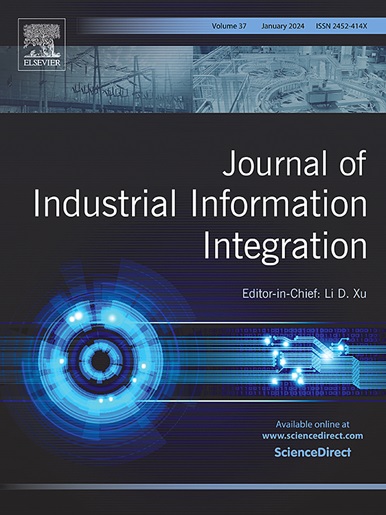Data enabling technology in digital twin and its frameworks in different industrial applications
IF 10.4
1区 计算机科学
Q1 COMPUTER SCIENCE, INTERDISCIPLINARY APPLICATIONS
引用次数: 0
Abstract
Digital twins (DT) are virtual representations of physical entities that integrate real-time data and simulation. By mirroring real-world counterparts and continuously updating based on live data, DTs allow organizations to simulate, monitor, and control processes with unprecedented precision, thus reducing costs, improving productivity, facilitating innovation and adaptability in industrial operations. Studying DT technology is critical to address the growing complexity of industrial systems and the need for more adaptable, efficient data integration of multisource, secure data enabling technologies and frameworks. The study highlighted the pivotal role of DT technology in advancing industrial digitalization, particularly within the manufacturing sector. It examined the origins, evolution, and potential applications of DTs, incorporating insights from academic and industrial perspectives. By reviewing a range of literatures, this article identifies gaps in advancing DT technology in smart manufacturing systems in terms of technical limitations hampering the implementation, emphasizing the need for more adaptable and accessible frameworks, integrating multisource data, ensuring scalability, and maintaining data security to meet the evolving demands of Industry 4.0 with better efficiency and reduce costs. The findings underscored the necessity for continued research and development to establish adaptable and robust DT technologies which provide scalable architectures, improved interoperability, and enhanced accuracy in simulations, capable of meeting the current evolving industrial demands.
数字孪生中的数据赋能技术及其在不同工业应用中的框架
数字孪生(DT)是物理实体的虚拟表示,它集成了实时数据和仿真。通过镜像现实世界的对应对象并基于实时数据不断更新,DTs允许组织以前所未有的精度模拟、监控和控制流程,从而降低成本、提高生产力、促进工业运营中的创新和适应性。研究数据挖掘技术对于解决工业系统日益复杂的问题以及对更具适应性、更高效的多源数据集成、更安全的数据支持技术和框架的需求至关重要。该研究强调了DT技术在推进工业数字化方面的关键作用,特别是在制造业。它考察了DTs的起源、演变和潜在应用,结合了来自学术和工业角度的见解。通过回顾一系列文献,本文确定了智能制造系统中推进DT技术在技术限制方面的差距,这些限制阻碍了实施,强调需要更具适应性和可访问性的框架,集成多源数据,确保可扩展性,维护数据安全性,以满足工业4.0不断变化的需求,提高效率并降低成本。研究结果强调了继续研究和开发的必要性,以建立适应性强且强大的DT技术,提供可扩展的架构,改进互操作性,提高仿真精度,能够满足当前不断发展的工业需求。
本文章由计算机程序翻译,如有差异,请以英文原文为准。
求助全文
约1分钟内获得全文
求助全文
来源期刊

Journal of Industrial Information Integration
Decision Sciences-Information Systems and Management
CiteScore
22.30
自引率
13.40%
发文量
100
期刊介绍:
The Journal of Industrial Information Integration focuses on the industry's transition towards industrial integration and informatization, covering not only hardware and software but also information integration. It serves as a platform for promoting advances in industrial information integration, addressing challenges, issues, and solutions in an interdisciplinary forum for researchers, practitioners, and policy makers.
The Journal of Industrial Information Integration welcomes papers on foundational, technical, and practical aspects of industrial information integration, emphasizing the complex and cross-disciplinary topics that arise in industrial integration. Techniques from mathematical science, computer science, computer engineering, electrical and electronic engineering, manufacturing engineering, and engineering management are crucial in this context.
 求助内容:
求助内容: 应助结果提醒方式:
应助结果提醒方式:


